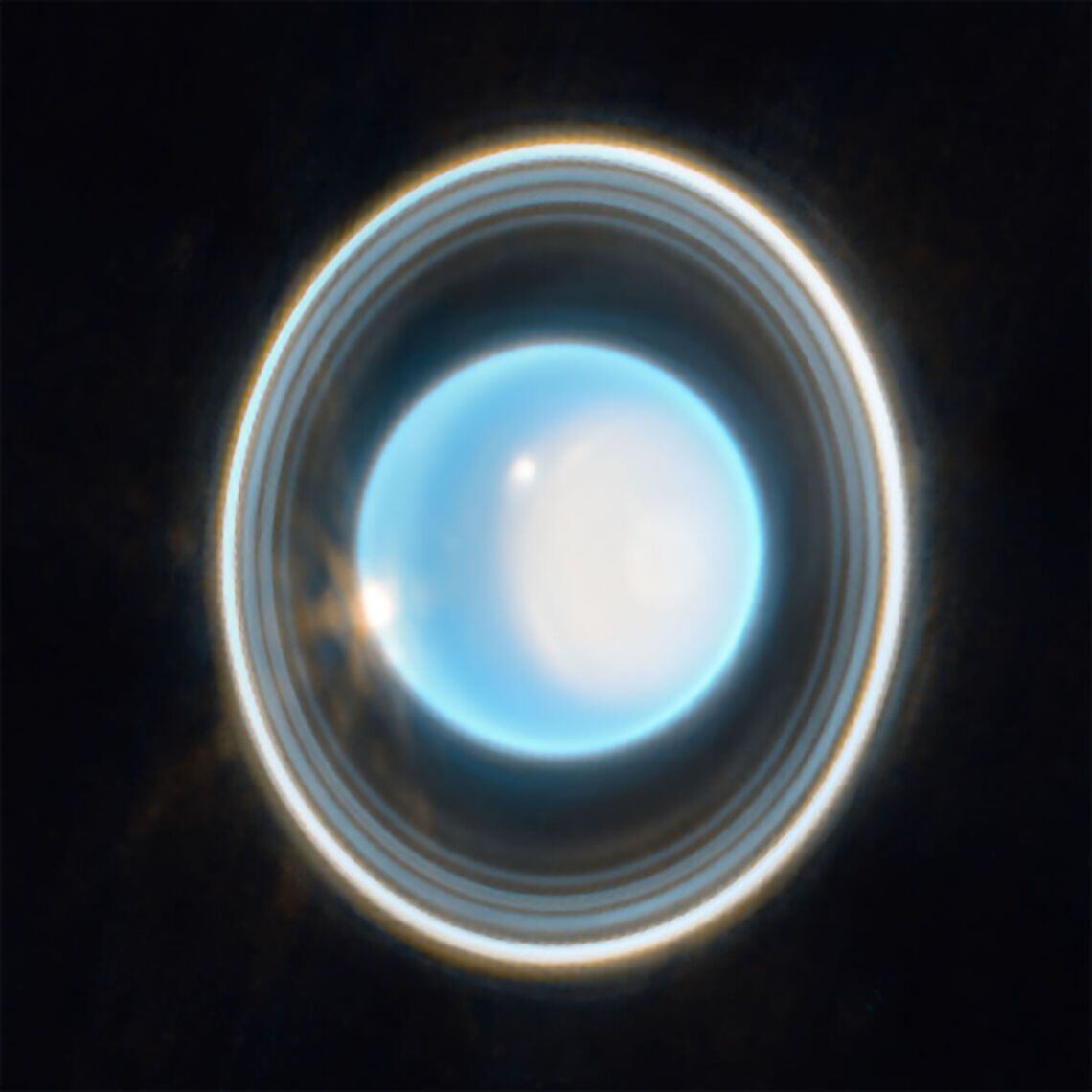This ice giant of our Solar System had never been seen so clearly.
NASA released this new image of Uranus, the seventh planet from the Sun, captured by the James Webb Space Telescope.
LOOK: “The Pope’s Exorcist”: the story of the Italian priest who inspired the new Russell Crowe film
When the Voyager 2 spacecraft flew past Uranus in 1986 its camera showed a nearly featureless blue-green ball.
But infrared wavelengths and Webb’s sensitivity reveal instead spectacular rings and data from the planet’s atmosphere, reports the US space agency.
Uranus has unique characteristics in the Solar System. It is the only planet that rotates on its side.at an angle of approximately 90 degrees from the plane of its orbit.
This causes extreme seasons as the planet’s poles experience years of constant sunlight followed by an equal number of years of total darkness.
A day on Uranus lasts 17 hours and 14 minutes (the time it takes to rotate on itself). But one year, the time it takes to complete its orbit around the Sun, equals 84 Earth years (30,687 days on our planet).
Uranus has 13 known rings and 11 of them are visible in this image of Webb. Some of the rings look so bright that they appear to be a single larger ring.
The image also reveals some of the 27 known moons of Uranusalthough most are too small to see here.
ice giant
Uranus is made mostly of fluid ice on a solid core.
Neptune and Uranus are called ice giants because, although they are also gas planets like Jupiter and Saturn, they are mostly made up of frozen water, methane and ammonia.
The planet shows a blue hue in the representative color release image, created by combining data from two filters.
In the image, an area that shines at the pole facing the Sun, known as the polar cap, can be seen on the right side of the planet.
The mechanism by which this cap appears to arise when the pole enters direct sunlight in the summer and disappear in the fall remains a mystery.
At the edge of the polar cap is a bright cloud, and there is a second bright cloud to the far left of the planet. Both clouds are probably related to storms.
The image is the result of an exhibition of only 12 minutes of Uranus with two filters. It is just the tip of the iceberg of what the James Webb telescope can reveal about the planet, according to NASA.

Source: Elcomercio
I am Jack Morton and I work in 24 News Recorder. I mostly cover world news and I have also authored 24 news recorder. I find this work highly interesting and it allows me to keep up with current events happening around the world.

:quality(75)/cloudfront-us-east-1.images.arcpublishing.com/elcomercio/GE2TCNJNGA2C2MBXKQYDAORRGU.jpg)

:quality(75)/cloudfront-us-east-1.images.arcpublishing.com/elcomercio/BNNM5PSDD5BORPCTJSI3DZOWKA.png)
:quality(75)/cloudfront-us-east-1.images.arcpublishing.com/elcomercio/QODBVL6FGRECJGATS3JAZSTXS4.jpg)
:quality(75)/cloudfront-us-east-1.images.arcpublishing.com/elcomercio/NEAFJ4AJ6ZGX7HS5LSP3UJSU74.jpg)

